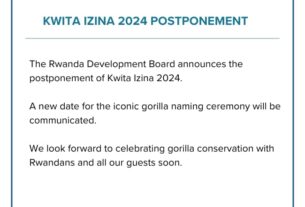Palestinian intelligencer Hassan Hamad was tragically killed during an Israeli airstrike on his home in the Jabalia exile camp in northern Gaza, pressing the intimidating escalation in the number of intelligencers who have lost their lives in the region. At just 19 times old, Hamad was n’t only a budding intelligencer but also a married bystander of the ongoing conflict in Gaza. His death marks a dimmed corner, as it contributes to the distressing statistic of 175 Palestinian intelligencers killed since the outbreak of conflict in October 2023, according to the Gaza Government Media Office. This situation raises significant enterprises about press freedom and the safety of intelligencers operating in conflict zones.
Hamad’s trip as a intelligencer was fraught with challenges. Just days prior to his death, he’d reported entering pitfalls from an Israeli officer advising him to cease his filming conditioning in Gaza. The communication he entered via WhatsApp served as a nipping memorial of the troubles faced by those who seek to validate the realities of war. The officer’s words were stark and threatening” If you continue spreading falsehoods about Israel, we’ll come for you next.” similar pitfalls illustrate not only the particular pitfalls that intelligencers like Hamad endure but also the broader climate of fear that can stifle free expression and independent reporting in conflict zones.
The environment girding Hamad’s death suggests that it was n’t a arbitrary act of violence. Associates and officers verified that his home was specifically targeted in the airstrike, raising serious enterprises about the deliberate attempt to silence his reporting. This targeted approach indicates a disquieting trend in which intelligencers are decreasingly at threat of being caught in the crossfire of military operations, or worse, designedly targeted due to their work. A coworker of Hamad’s poignantly captured the substance of his fidelity on social media, stating,” Hassan Hamad, the intelligencer who did n’t live past the age of 20, defied for a full time. He plodded to find internet access, sitting on rooftops for hours just to shoot his vids.” This homage underscores not only Hamad’s determination but also the harsh realities that numerous intelligencers face in war- torn regions.
On the morning of his death, Hamad had reached out to a coworker to shoot what would be his final videotape report. In a haunting phone call, he stated, “ There they are, there they are, it’s done, ” before the call suddenly ended. This final communication serves as a woeful encapsulation of his commitment to journalism and his desire to partake the verity, indeed in the face of inviting peril. It highlights the dangerous circumstances under which intelligencers operate and the vital part they play in bringing attention to the mortal suffering that unfolds during conflicts.
According to the Committee to cover intelligencers( CPJ), the total number of intelligencers and media workers killed in the region is stunning. At least 128 intelligencers are included in the over 41,000 casualties recorded since the onset of the war. These numbers reflect not only the scale of the violence but also the decreasingly dangerous terrain for those who seek to inform the world about the realities of life in Gaza. The deaths of intelligencers like Hamad signify a loss not just of individual lives but of critical voices that contribute to the public’s understanding of complex geopolitical issues.

As of now, the Israeli government has not issued any formal comment regarding Hamad’s death, which adds to the ongoing concern about responsibility in situations involving the deaths of intelligencers. The silence from government officers can be interpreted in colorful ways, but it really contributes to the frustrations felt by lawyers for press freedom. CPJ Program Director Carlos Martinez de la Serna emphasized the significance of guarding intelligencers and the broader counteraccusations of their deaths. He stated, “ Every time a intelligencer is killed, injured, arrested, or forced into exile, we lose fractions of the verity. ” This perspective underscores the essential part intelligencers play in popular societies, where the free inflow of information is vital for informed public converse.
The transnational community’s response to the targeting of intelligencers in conflict zones has been one of adding concern. As incidents like Hamad’s death accumulate, calls for responsibility grow louder. Martinez de la Serna further stressed that those responsible for similar conduct would eventually face scrutiny under transnational law and the judgment of history. The need for legal fabrics to cover intelligencers and hold violators responsible is consummate, especially in surrounds where military operations and civil liberties cross.
The loss of youthful intelligencers like Hassan Hamad serves as a woeful memorial of the high stakes involved in reporting from conflict zones. These individualities frequently find themselves navigating a complex geography filled with pitfalls from colorful actors, including state forces and fortified groups. Their stories give inestimable perceptivity into the mortal condition during times of extremity, yet they also expose them to significant pitfalls. The responsibility of guarding these intelligencers does n’t rest solely on the shoulders of original authorities; it extends to transnational associations, governments, and civil society groups committed to defending press freedom.
The payoff of Hassan Hamad represents a grievous loss not only for his family and community but also for the broader journalistic geography. As the number of intelligencers killed in the region continues to rise, the urgency to cover media professionals in conflict zones becomes ever more critical. The transnational community must n’t only condemn these acts of violence but also take concrete way to guard intelligencers’ rights and insure responsibility for those who prosecute violence against them. As we reflect on Hamad’s life and heritage, it’s pivotal to advocate for a world where intelligencers can report freely and safely, illuminating the trueness of our time without fear of retaliation. The fight for press freedom is a fight for the right to know, and it must continue unabated in honor of those like Hassan Hamad who paid the ultimate price in pursuit of that right.



